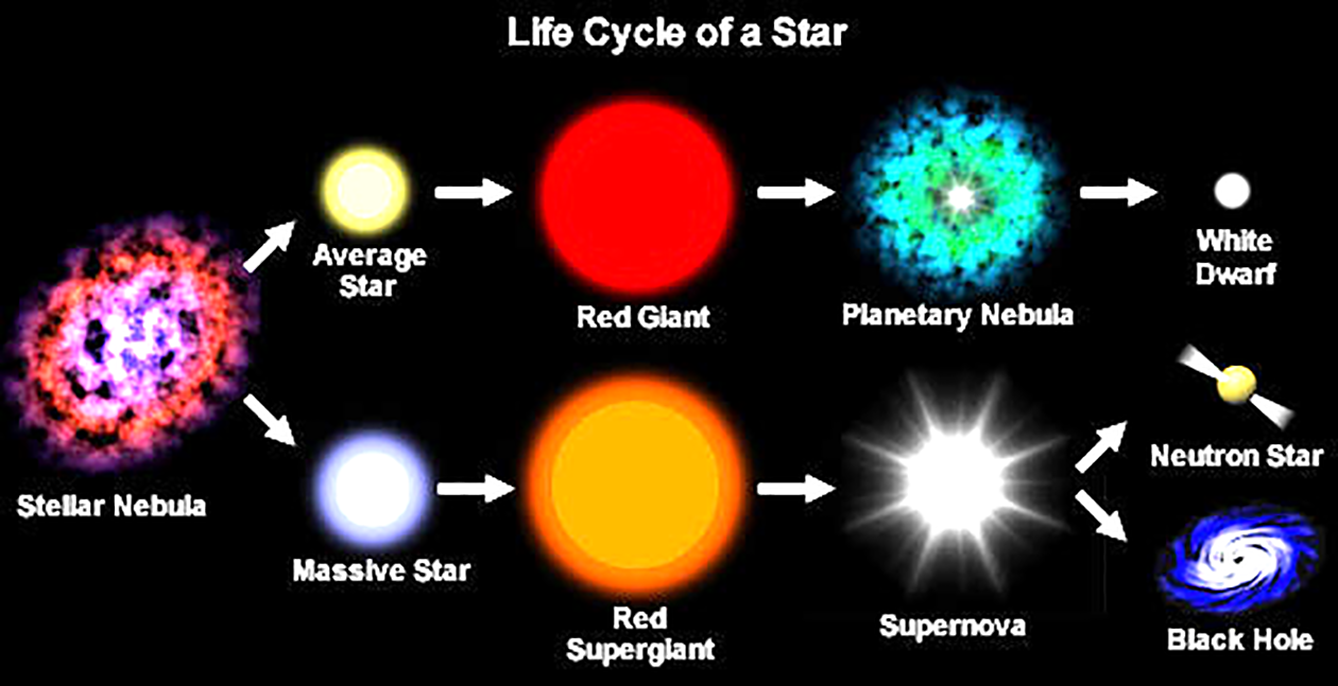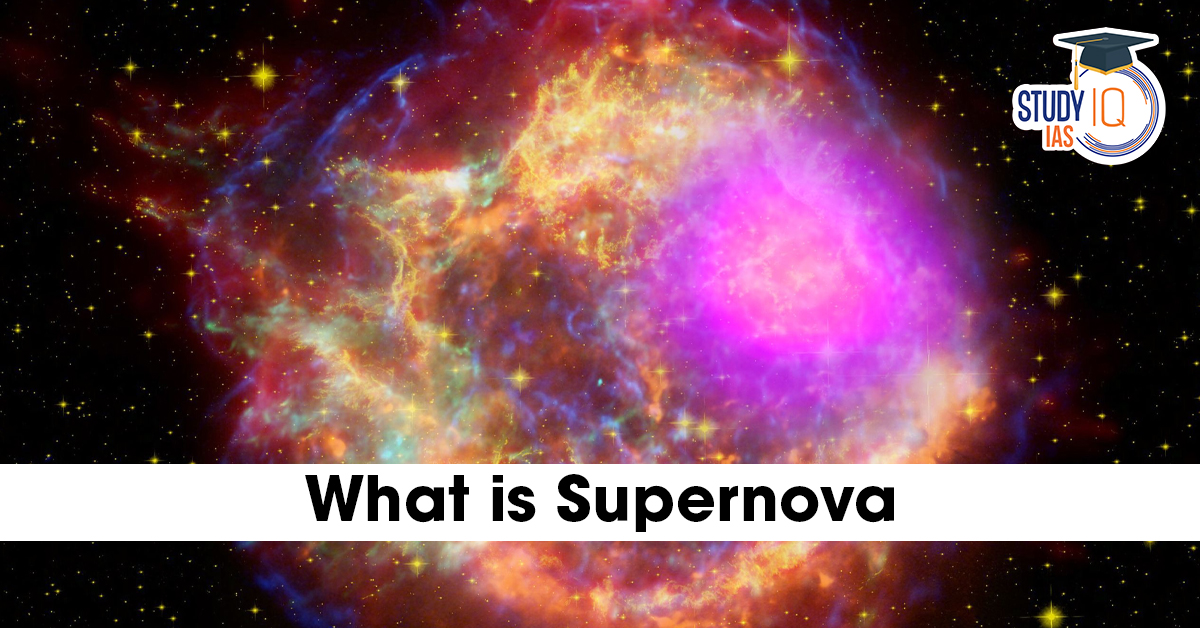Context: Astronomers reported in The Astrophysical Journal the discovery of a new type of supernova that occurs when a black hole wins a gravitational tug-of-war against a giant star.
What is Supernova?
- Definition: A supernova is a powerful explosion that occurs at the end of a massive star’s life cycle.
Types
There are two main types of supernovae:
- Type I – Happens when a white dwarf in a binary system gains too much mass from its companion star and explodes.
- Type II – Occurs when a massive star (at least 8 times the Sun’s mass) runs out of nuclear fuel and its core collapses.
Core-collapse supernova
This happens in the last part of a very massive star’s life (at least eight times as heavy as our sun). Once the star has fused elements up to iron, its core is not able to generate sufficient outward pressure to resist the pull of gravity. The core collapses in on itself, and a shockwave is initiated that sends the outer layers of the star out into space. What remains behind is a dense core, and this forms either a neutron star or, in the very massive stars, a black hole.
Thermonuclear runaway supernova
This variety includes a white dwarf, the compact remnant of a low-mass star. If a white dwarf in a binary star system is given too much material by its companion star, it will cross a critical mass boundary (the Chandrasekhar limit). This sets off a runaway nuclear fusion process that destroys the white dwarf entirely, not leaving any core.

- Energy Release: In just a few seconds, a supernova releases more energy than the Sun will emit in its entire lifetime.
- Brightness: They can shine as bright as an entire galaxy for days or weeks.
- Elements Creation: Heavy elements like iron, gold, and uranium are formed in supernovae and spread into space.
- Role in Universe: The explosion enriches space with these elements, seeding new stars, planets, and even life.
- Remnants: After a supernova, what’s left behind can be a neutron star or a black hole.
- Observation: Some can be seen with the naked eye from Earth and have been historically recorded (e.g., the Crab Nebula supernova in 1054 AD).
Supernovae are vital to the evolution of the universe. They are the providers of much of the heavier elements (such as gold, silver, and uranium) and spread them throughout the universe, creating the building blocks for new stars, planets, and indeed life itself.


 Advanced Air Defence Radars: Types, Comp...
Advanced Air Defence Radars: Types, Comp...
 Ion Chromatography, Working and Applicat...
Ion Chromatography, Working and Applicat...
 Broadly Neutralising Antibodies (bNAbs):...
Broadly Neutralising Antibodies (bNAbs):...

























